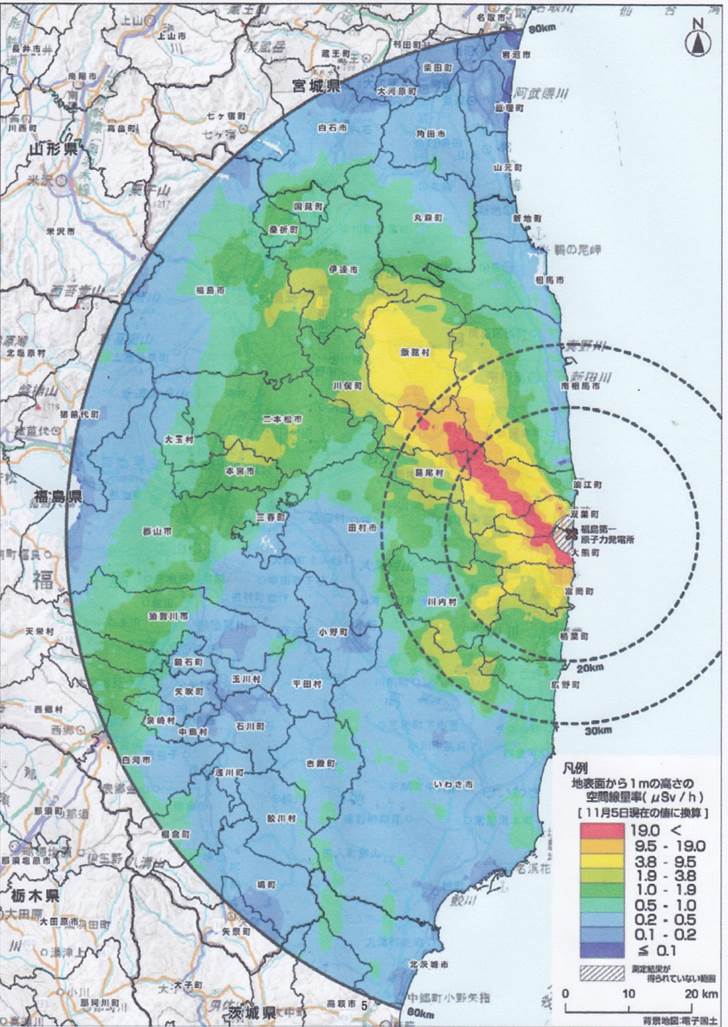Accident
scenario
After the 11 March 2011 Tohoku Great earthquake and associated Tsunami,
TEPCO Fukushima Daiichi nuclear power station (NPS) was severely damaged.
The damage resulted in loss of cooling to the three reactor units, and
eventually led to overheating, hydrogen explosion and partial melting of
the core of reactors, Units 1, 2 and 3. As a consequence, significant amount
of radioactive material (131I, 137Cs and 134Cs, a total of about 1017 Bq in iodine equivalent) was released into the environment during 12-15 March. In particular, large amount of radioactive materials were discharged from Unit 2 during the morning of 15 March and diffused to the northwest of the NPS with wind and precipitated onto ground with heavy snow and rain.
Upon notification of the TEPCO on nuclear disaster,
the goverment decleared a nuclear emergency at 19:03 on 11 March, and at
21:23 on 11 March ordered the residents within 3 km radius to evacuate
(evacuation zone) and poeple withing 3-10 km radius to stay within their
houses (sheltering zone). At 18:25 on March 12, the evacuation zone was expandend to 20 km radius,
and furthermore at 11:00 on March 15, the sheltering zone was expanded
to a 30 km radius. On 22 April, a northwest area out of 20 km limit was
established as the delibrate evacuation zone because this area was heavily
contaminated and predictive dose to the residents could exceed 20 mSv per
year. (See Review by Tanaka, S. Proc. Japan Acad., Ser. B, 88:2012; Pollution
map in right panel: MEXT; radioactivity.nsr.go.jp)
More than 90,000 residents evacuated from
areas near the NPS. As of 1 December 2011, more than 230,000 people have
been screened for radioactive contamination. Some NPS workers involved
in the restoration have been exposed. The number of workers and radiation
dose accumulated from 11 Mach 2011 to 31 December 2011 are as follow. Chromosome
aberration analysis has been made in National Institute of Radiological
Science (NIRS) for several of these NPS workers in blood samples obtained
from 21 March to 1 July 2011.
| . | Radiation exposure (mSv) from 11 March to 31 December, 2011 | Number of NPS workers | |
| 100-150 | 135 | ||
| 150-200 | 23 | ||
| 200-250 | 3 | ||
| 250-678 | 6 | ||
| *) Japan Atomic Industrial Forum (http://www.jaif.or.jp/english/news_images/pdf | . |
